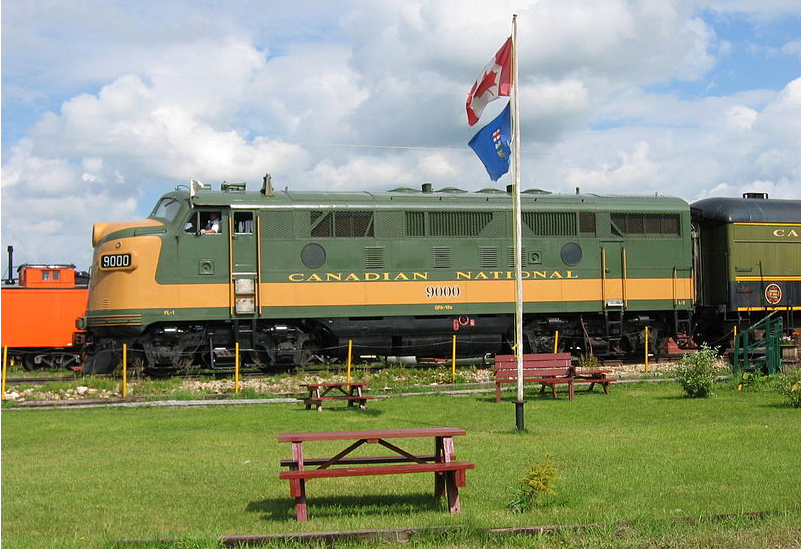DCHP-2
Canadian National Railways Canadian National Railway, C.N.R., CNR, CN Rail DCHP-2 (October 2016)
n. — Transportation
the largest rail network in Canada, spanning over 30,000 km of track in Canada and the US.
Type: 1. Origin — The Canadian National Railways was incorporated 6 June 1919. It originally comprised five railways that had been in financial trouble between 1917 and 1923 and subsequently nationalized by the Canadian government. The company expanded its holdings to include marine cargo transport, hotels, telecommunications and resource industries, but its core is still the rail system, which focuses on freight rather than passenger service. CN was a Crown corporation essential for the development of the country until its privatization in November 1995 (see the Canadian Encyclopedia reference).
Between 1923 and 1932, a cross-Canada radio network was developed to provide passengers with on-board entertainment and to give the CNR a competitive edge over its rival, the Canadian Pacific Railway. Eventually this radio network was sold to the Canadian Radio Broadcasting Commission, which would eventually become the Canadian Broadcasting Corporation.
Canadian National Railways was also the name of the public company that held the rail system and other assets until 1960 when the company name changed to Canadian National (CN).See also: Crown company Canadian Pacific Railway CNR Canadian Broadcasting Corporation Canadian Radio Broadcasting Commission
- The original full name of Canadian National Railways was first abbreviated as C.N.R. (see the 1912, 1918, 1931, 1941 quotations), then replaced with the short form CNR (see the 1945 quotation). To help differentiate the railway from its holding company (Canadian National or CN), it may be referred to as CN Rail.
References:
- Canadian Encyclopedia s.v. ""Canadian National Railway" Accessed 31 May 2016
Images:

Image 1: A Canadian National Railways locomotive, Alberta Railway Museum. Source: Wikimedia Commons. Photo: SoftwareSimian